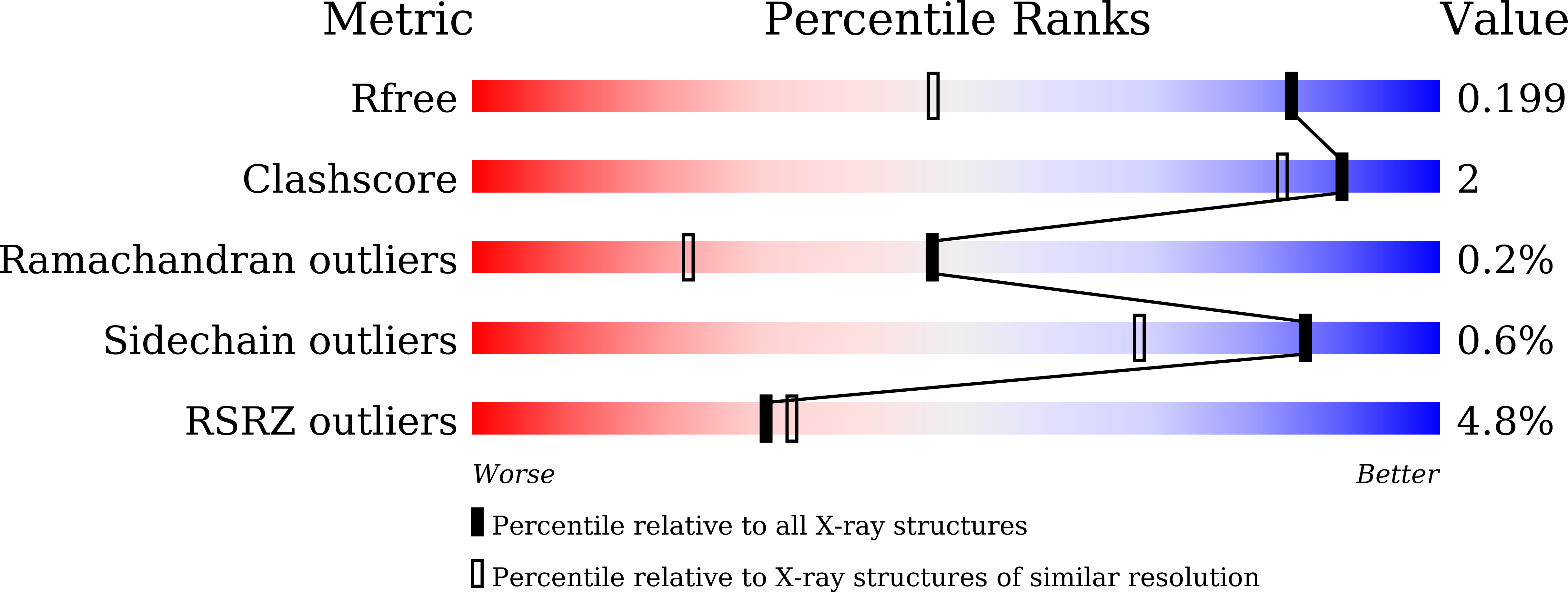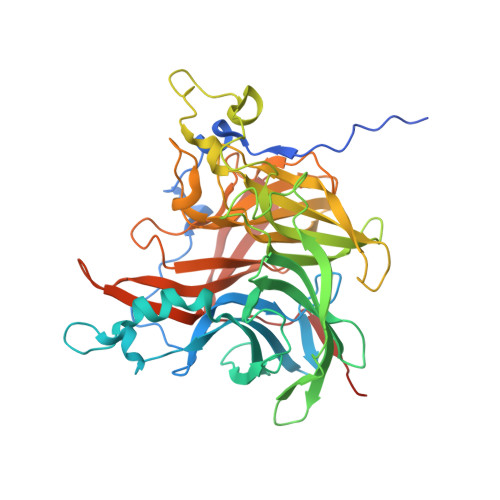Crystal Structure of Levansucrase from the Gram-Negative Bacterium Brenneria Provides Insights into Its Product Size Specificity.
Xu, W., Ni, D., Hou, X., Pijning, T., Guskov, A., Rao, Y., Mu, W.(2022) J Agric Food Chem 70: 5095-5105
- PubMed: 35388691
- DOI: https://doi.org/10.1021/acs.jafc.2c01225
- Primary Citation of Related Structures:
7EHR, 7EHS, 7EHT, 7FDZ - PubMed Abstract:
Microbial levansucrases (LSs, EC 2.4.1.10) have been widely studied for the synthesis of ¦Â-(2,6)-fructans (levan) from sucrose. LSs synthesize levan-type fructo-oligosaccharides, high-molecular-mass levan polymer or combinations of both. Here, we report crystal structures of LS from the G - -bacterium Brenneria sp. EniD 312 ( Brs -LS) in its apo form, as well as of two mutants (A154S, H327A) targeting positions known to affect LS reaction specificity. In addition, we report a structure of Brs -LS complexed with sucrose, the first crystal structure of a G - -LS with a bound substrate. The overall structure of Brs -LS is similar to that of G - - and G + -LSs, with the nucleophile (D68), transition stabilizer (D225), and a general acid/base (E309) in its active site. The H327A mutant lacks an essential interaction with glucosyl moieties of bound substrates in subsite +1, explaining the observed smaller products synthesized by this mutant. The A154S mutation affects the hydrogen-bond network around the transition stabilizing residue (D225) and the nucleophile (D68), and may affect the affinity of the enzyme for sucrose such that it becomes less effective in transfructosylation. Taken together, this study provides novel insights into the roles of structural elements and residues in the product specificity of LSs.
Organizational Affiliation:
State Key Laboratory of Food Science and Technology, Jiangnan University, Wuxi, Jiangsu 214122, PR China.




















